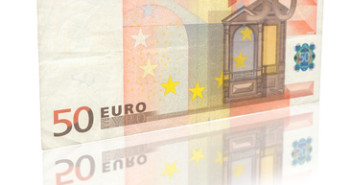EUR/USD is steady in Wednesday trading. The pair is trading slightly above the 1.34 line in Wednesday’s European session. In economic news, Eurozone Industrial Production looked weak, dropping 0.5% in October. It’s another quiet day in the US, with no major releases on the schedule.
Here is a quick update on the technical situation, indicators, and market sentiment that moves euro/dollar.
EUR/USD Technical
- In the Asian session, EUR/USD was steady, touching a high of 1.3453 before consolidating at 1.3431. The pair has edged lower in the European session.
- Current range: 1.3400 to 1.3440.
Further levels in both directions:Â 
- Below: 1.3400, 1.3320, 1.3240, 1.3175, 1.31, 1.3050 and 1.3000, 1.2940, 1.2890 and 1.2840.
- Above: 1.3440, 1.3500, 1.3570, 1.3650, 1.3710, 1.3800 and 1.3870
- 1.3400 has reverted to a support role. 1.3320 is stronger.
- On the upside, 1.3440 is providing weak resistance. 1.3500 follows.
EUR/USD Fundamentals
- 10:00 Eurozone Industrial Production. Exp. -0.2%, Actual -0.5%.
- 12:10Â German Buba President Jens Weidmann Speaks.
- 18:01 US 10-year Bond Auction.
- 19:00 US Federal Budget Balance. Exp. -104.3 B.
*All times are GMT
For more events and lines, see the Euro to dollar forecast.
EUR/USD Sentiment
- Eurozone manufacturing data disappoints: Weak economic growth in the Eurozone was one of the factors that precipitated the ECB’s rate cut last week. The manufacturing sector is one sore spot in the economy, as underscored by a weak Eurozone Industrial Production release on Wednesday. The important indicator declined 0.5%, short of the estimate of -0.2%. It was the second decline in the past three readings. Earlier this week, Italian Industrial Production posted a weak gain of 0.2%, matching the estimate. If Eurozone releases continue to point to sluggish growth, we can expect the euro to remain under strong pressure from the US dollar.
- German inflation indicators point downwards: Germany released inflation data on Tuesday, and the markets were treated to weak numbers. Final CPI dropped 0.2%, its first decline since April. The index has not looked strong lately, posting two consecutive releases of 0.0%. There was no relief from German Wholesale Price Index, which posted a sharp decline of -1.0%, well off the estimate of 0.3%. It was the index’s worst showing since June 2012. Weak Eurozone inflation was a major factor in the ECB’s rate cut last week, and the Bank will likely have to take further monetary steps if Eurozone and German inflation numbers do not move towards the ECB’s inflation target of 2%.
- Greece and troika at odds over Greek budget: Greece has imposed sharp austerity measures to get its fiscal house in order, but stumbling blocks remain on the bumpy road to economic recovery. The troika has promised Greece another installment of aid worth 1 billion euros, but wants to see the country plug a 2 billion euro hole in its 2014 budget. The Greek government has rejected tax hikes or cuts in wages or pensions, which will make it difficult to eliminate this deficit. The troika has already provided Greece with some 240 billion euros in aid since 2010 and is insisting that the government stay within its 2014 budget, and has threatened to suspend the next installment until Athens takes further steps to keep costs under control. The tug-of-war between the sides will likely continue for some time.
- Non-Farm Payrolls Soars: The markets had very low expectations from the October NFP, with an estimate of just 121 thousand. However, the indicator jumped to 204 thousand, its highest level in eight months. The sparkling NFP figure gave a boost to the US dollar, and has increased speculation that the Fed might press the tapering trigger in December. Such talk could bolster the US currency, as a reduction in QE is bullish for the dollar.
- Euro under pressure: The surprise ECB rate cut and superb Non-Farm Payrolls are the latest setbacks for the struggling euro. The currency looked sharp just a couple of weeks ago, when it was trading above the 1.38 line. Since then, the euro has taken a sharp turn downwards, shedding about four cents against the US dollar. With increasing talk of a Dectaper from the Federal Reserve, there is more room for the euro to fall.



